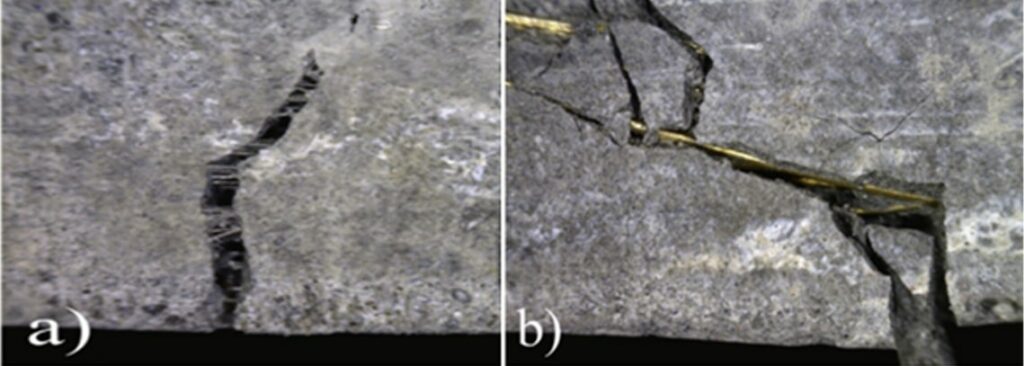Tapping into Graphene’s Potential:
Enhancing Coatings with Nanotechnology for Weather Resistance
Coatings are designed for decorative purposes and to protect surfaces, especially against corrosion and moisture. In a coating system (multilayer), the top or finishing layer plays a crucial role as it must provide a good appearance and protect the inner layers and the substrate against environmental factors such as sunlight, humidity, corrosion, chemical resistance, soiling, etc., throughout its lifespan.
Today, Polyurethane (PU) is considered one of the coatings with the best physical-chemical characteristics for finishing coating applications and for its weather resistance. However, its weather resistance decreases with exposure to ultraviolet light over long periods.
Sunlight is one of the main causes of damage to coatings. Damage ranges from loss of physical properties, powdering (chalking), cracking, peeling, discoloration, and color change, because of chemical photodegradation, migration, evaporation, and interaction of other components with the coating.
In recent years, various nanostructured materials such as titanium, zinc oxide, cerium, and iron oxide have been implemented to improve the weather resistance of polymeric coatings. The mechanism is based on their projection effect (both absorption and dispersion) of incident rays in the UV region. These materials can stabilize coatings against exterior exposure, possess photocatalytic activity that can destroy the organic binder material present in coatings, leading to modifying the surface of these nanostructured materials to eliminate or inhibit their photocatalytic activity, requiring more processes, time, and money.

Recently, graphene has attracted much attention as a new additive and material for producing coatings to enhance anticorrosive, antimicrobial, and weather-resistant properties, due to its special electronic structure that provides unique electrical, mechanical, and chemical properties. Graphene is a nanomaterial formed by one or more layers of carbon (formed by carbon atoms bonded hexagonally with a thickness of one carbon atom). This structure enables graphene-based materials to absorb photons in the UV region. This UV absorption capacity, as well as the absence of photocatalytic activity of graphene materials, allows introducing these materials as new additives for the photo-stabilization of polymeric coatings, i.e., with greater resistance to UV radiation
Currently, Energeia – Graphenemex®, is in constant development of nanotechnological coatings with better properties. Studies have been conducted on the influence of graphene oxide on the weathering behavior of PU coatings. To evaluate the performance of graphene oxide, a PU coating with graphene oxide (PU/GO) was compared with a PU coating containing a commercial organic UV absorber (PU/control).
Color change in a coating during exposure to weathering (sunlight) is the most important and rapid parameter to visually evaluate coating degradation. To evaluate, color change, samples coated with Polyurethane with and without graphene material were introduced into an accelerated weathering chamber (based on ASTM G154). According to the standard, a QUV weathering chamber model QUV/se was used to accelerate weathering conditions. Coated samples were cyclically exposed to UVA radiation (energy 0.89 W/m2) for 8 hours, followed by moisture condensation for 4 hours at 50 °C. The color of the coatings was evaluated before exposure to compare their initial color, and subsequently evaluated at different exposure times, this evaluation was performed until reaching an exposure time of 1200 hours.
The main component of color typically considered in weathering behavior is the total color change or Delta E (ΔE). Fig. 1 shows the ΔE, as the most comprehensive criterion of color changes, which is the sum of changes in all color components.
As can be seen, most of the color variations throughout the exposure time belong to the PU/control coating. The sample containing graphene oxide (PU/GO) at 251 hours of exposure time shows a lower color change compared to PU/control. With the increase in exposure time in the weathering chamber, color variations can be observed, but the sample with graphene oxide continues to show lower color changes, indicating that the incorporation of GO in Polyurethane provides more resistance and maintains its stability for longer exposure times to weathering.

From a physical point of view, graphene oxide (GO) has higher transmittance in the visible region compared to graphene, which is more favorable for its use as a UV protector in finishing coatings. On the other hand, thanks to the high surface area of graphene materials, they can also provide excellent barrier effect properties and thus develop anticorrosive coatings with greater weather resistance.
Energeia – Graphenemex®, through its Graphenergy line, offers a wide range of nanotechnological coatings with graphene. These coatings offer high anticorrosive and antimicrobial protection. In addition to providing high wear resistance, UV resistance, impermeability, and extraordinary adhesion, with the aim of improving the life of any surface or installation and reducing maintenance costs.
References
- G. Wang, X. Shen, B. Wang, J. Yao, J. Park, Synthesis and characterisation of hydrophilic and organophilic graphene nanosheets, Carbon N. Y. 47 (no. 5) (2009) 1359–1364.
- B. Ramezanzadeh, M. Mohseni, H. Yari, S. Sabbaghian, A study of thermal-mechanical properties of an automotive coating exposed to natural and simulated bird droppings, J. Therm. Anal. Calorim. 102 (no. 1) (2010).
- N. Rajagopalan, A.S. Khanna, Effect of Methyltrimethoxy Silane Modification on Yellowing of Epoxy Coating on UV (B) Exposure vol. 2014, (2014).
- M. Hasani, M. Mahdavian, H. Yari⁎, B. Ramezanzadeh. Versatile protection of exterior coatings by the aid of graphene oxide nanosheets; comparison with conventional UV absorbers. 2017.
- S.M. Mirabedini, M. Sabzi, J. Zohuriaan-Mehr, M. Atai, M. Behzadnasab,
- Weathering performance of the polyurethane nanocomposite coatings containing silane treated TiO2 nanoparticles, Appl. Surf. Sci. 257 (no. 9) (2011) 4196–4203.
- N.S. Allen, M. Edge, A. Ortega, C.M. Liauw, J. Stratton, R.B. McIntyre, Behaviour of nanoparticle (ultrafine) titanium dioxide pigments and stabilisers on the photooxidative stability of water based acrylic and isocyanate based acrylic coatings, Polym. Degrad. Stab. 78 (no. 3) (2002) 467–478.
- Effect of Silane Modified Nano ZnO on UV Degradation of Polyurethane Coatings. vol. 79, (2015), pp. 68–74.
- M. Rashvand, Z. Ranjbar, S. Rastegar, Nano zinc oxide as a UV-stabilizer for aromatic polyurethane coatings, Prog. Org. Coatings 71 (4) (Aug. 2011) 362–368.























